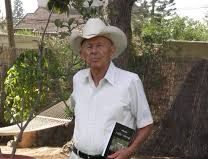Amir J.
Beginning in 1960 ,a co-worker an I investigated the assumption that
peanuts exert specific demands on the physical condition of the soil to
allow penetration of the pegs. The recommended practice in Israel was
deep soil preparation (25-35 cm) with frequent deep inter-row cultivation.
The most striking result of these experiments was out finding that, although different tillage treatments were effective in reducing soil strength and bulk density, no significant effect on plant yields was obtained. The peanut yields decreased as the number of inter-row cultivations was increased.
Dasberg, S. and Amir, J. {1962). Experiments on peanut cultivation in a loess soil. PreIim. Rep. No. 393. Division of Publication, Rehovot (in
Hebrew).
Dasberg, J. and Amir, J. (1964). Tillage experiments with peanuts
Agronomy J. 56: 259-262.
Dasberg, M. and Amir, J. (1965). Research and Experiments in Peanu!s, pp.
63-67. Agricultural Publication Division No. 67, Hakyria, Tel Aviv (in
Hebrew)
The influence of various soil moisture-regime on the yield and quality of cotton in an aride zone
Amir J. and Bielorai H.
The results of three cotton irrigation experiments in the Negev region indicate that by increasing the intervals between irrigations and by applying the first irrigation at the beginning of flowering ,maximum yields of 1700-2100 kg/ha can be obtained with three irrigations. In all treatments except the one with four irrigations, about 0.31 kg of lint was produced for each 1 m3 of irrigation water. In the three driest treatments, where cotton suffered from moisture stress during various periods of growth, no differences in lint quality could be detected in comparison with wetter treatments. As long as there were clear drought symptoms, such as in the three driest treatments, additional irrigation increased the number of bolls/plant, while the average boll weight remained unaffected. Additional irrigation in treatments where there were no clear water stress symptoms did not increase the number of bolls/plant, but increased the average boll weight.
Amir, J. and Bielorai, H. (1969). The influence of various soil moisture
regimes on the yield and quality of cotton in arid zone. J. Agric. Sci. 73:
425-429.
